Quality is in the cut.
Quality is in the cut.
Diamond Cut.
The cut of a diamond is a question of craftsmanship.
When you hear words like Brightness, Scintillation and Fire, they describe how masterfully a diamond is cut.
A diamond’s cut refers to how it interacts with light.
While a term like oval would refer to the shape, or outline of a diamond, cut also describes the overall design of a diamond, including the arrangement and proportions of the diamond’s facets.
Diamond cut grades are only given to round brilliant cut diamonds because they are the only cut that have standardized facets.
All other shapes are referred to as fancy shapes, which includes marquise, emerald, pear, oval, hearts and even triangles.
Proportions impact the face-up appearance, allure and attractiveness of diamonds. There are many components to consider when assessing the overall cut quality of a round brilliant diamond, one of which is the individual’s preference. Each grade range represents a range of proportion sets, so there is plenty of room for personal preference within a preferred grade range.
There is a nearly unlimited combination of proportions possible, and all of them impact the interaction with light, and ultimately how attractive the diamond appears.
GIA's diamond cut grading system.
Assessing the major components of a diamond, as well as its ability to interact with light, the Diamond Cut Grading System provides a standard system for consistently evaluating and documenting the cut quality of a standard round brilliant diamond from Excellent to Poor. This allows both gem and jewelry professionals and customers to make informed decisions when purchasing or selling a standard round brilliant diamond.
The major components of a standard round brilliant, from top to bottom, are crown, girdle and pavilion. Every round brilliant cut diamond has 57 or 58 facets, the 58th being a tiny flat facet at the bottom of the pavilion that’s known as the culet. The large, flat facet on the top is the table.
Standard round brilliant cut diamonds in the D-to-Z color range are assessed by their face-up appearance, design and craftsmanship.
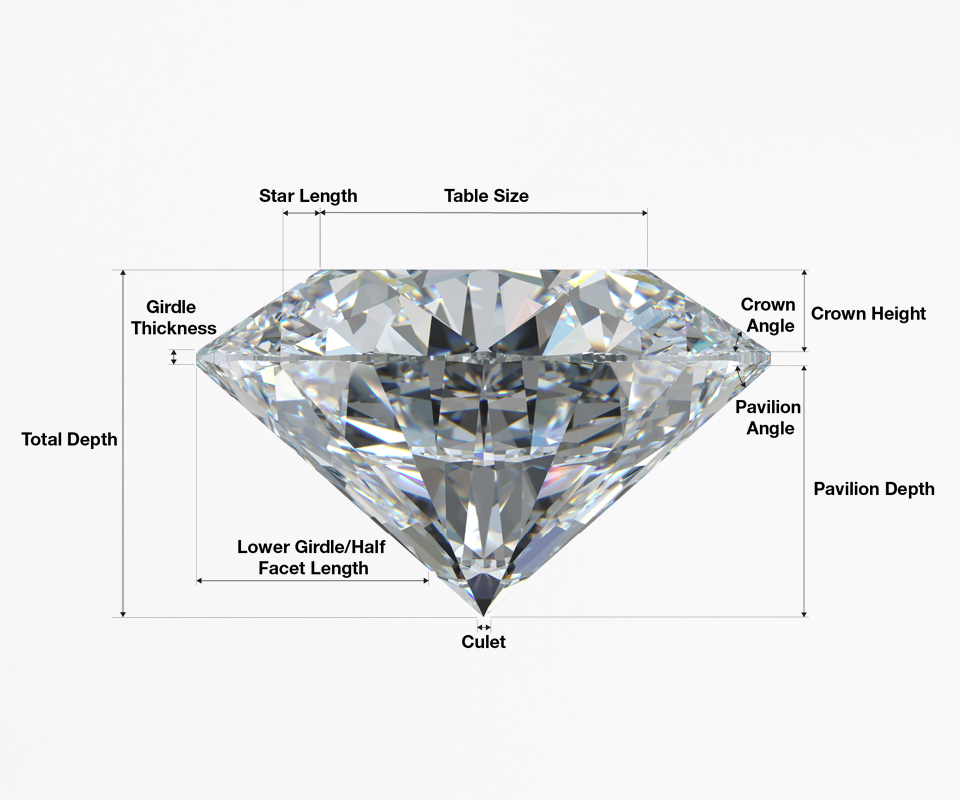

GIA's diamond cut grading system.
Assessing the major components of a diamond, as well as its ability to interact with light, the Diamond Cut Grading System provides a standard system for consistently evaluating and documenting the cut quality of a standard round brilliant diamond from Excellent to Poor. This allows both gem and jewelry professionals and customers to make informed decisions when purchasing or selling a standard round brilliant diamond.
The major components of a standard round brilliant, from top to bottom, are crown, girdle and pavilion. Every round brilliant cut diamond has 57 or 58 facets, the 58th being a tiny flat facet at the bottom of the pavilion that’s known as the culet. The large, flat facet on the top is the table.
Standard round brilliant cut diamonds in the D-to-Z color range are assessed by their face-up appearance, design and craftsmanship.
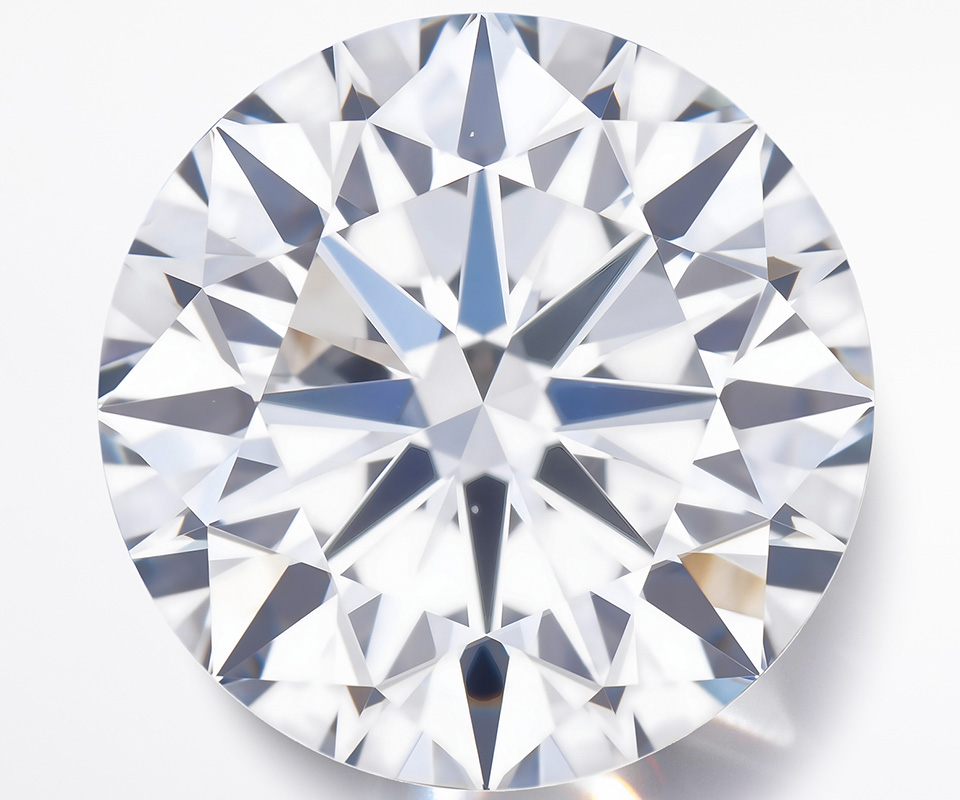
Face-up appearance:
Brightness: The total internal and external reflection of white light.
Fire: The dispersion of light into the colors of the spectrum.
Scintillation: The pattern of light and dark areas, and the sparkle when moved.
Face-up appearance:
Brightness: The total internal and external reflection of white light.
Fire: The dispersion of light into the colors of the spectrum.
Scintillation: The pattern of light and dark areas, and the sparkle when moved.
Photo courtesy of Sotheby’s.
Design:
Weight ratio: The description of a diamond’s overall weight in relation to its diameter.
Durability: The risk of damage inherent in a polished diamond’s proportions.
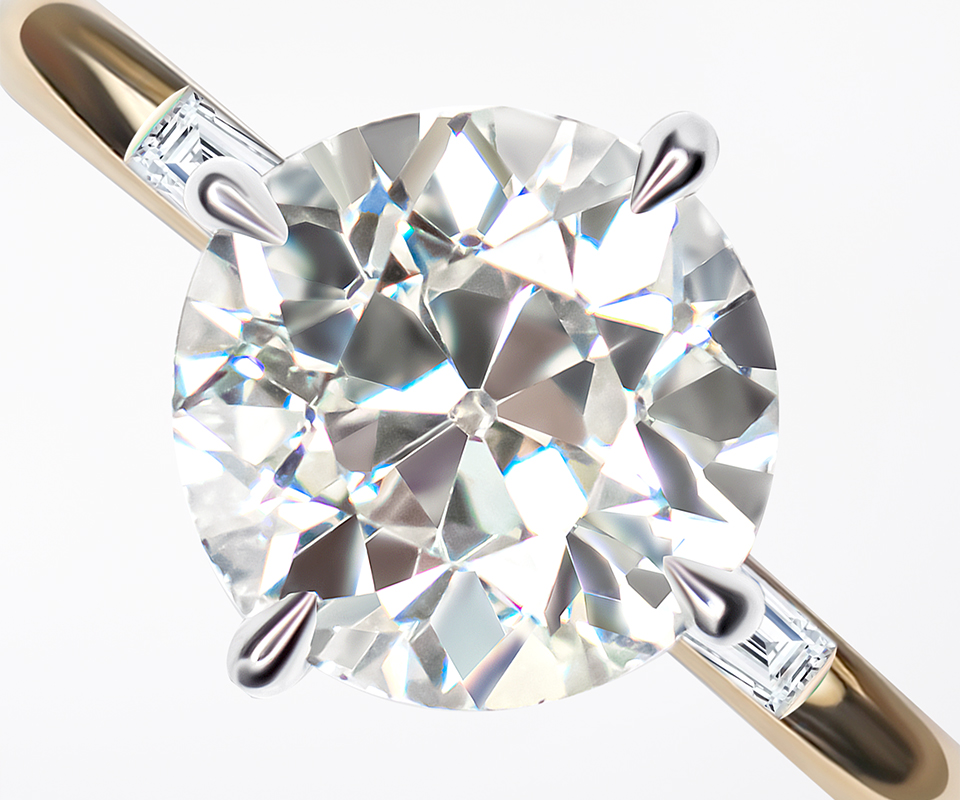

Design:
Weight ratio: The description of a diamond’s overall weight in relation to its diameter.
Durability: The risk of damage inherent in a polished diamond’s proportions.
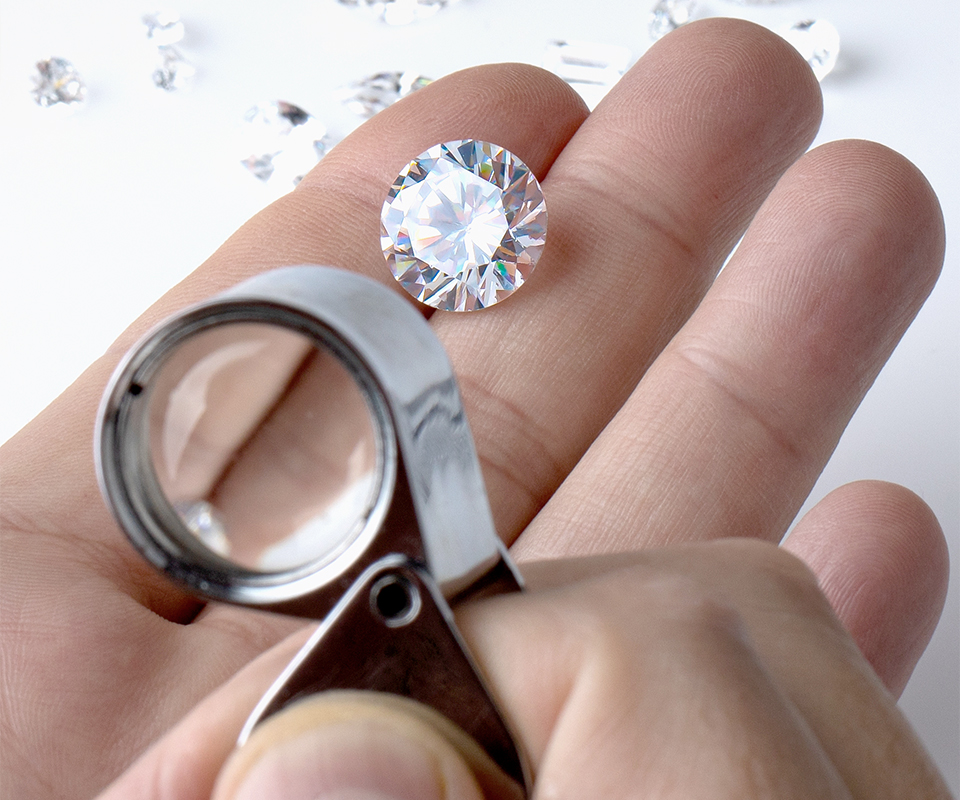
Craftsmanship:
Polish: The overall condition of a finished diamond’s facet surfaces.
Symmetry: The exactness of the shape and the placement of a diamond’s facets.
The evolution of cut evaluation.
Our cut evaluating system continues to evolve. Informed by observational studies, we continue to incorporate new state-of-the-art technologies to ensure that we provide the most accurate and trustworthy results possible.
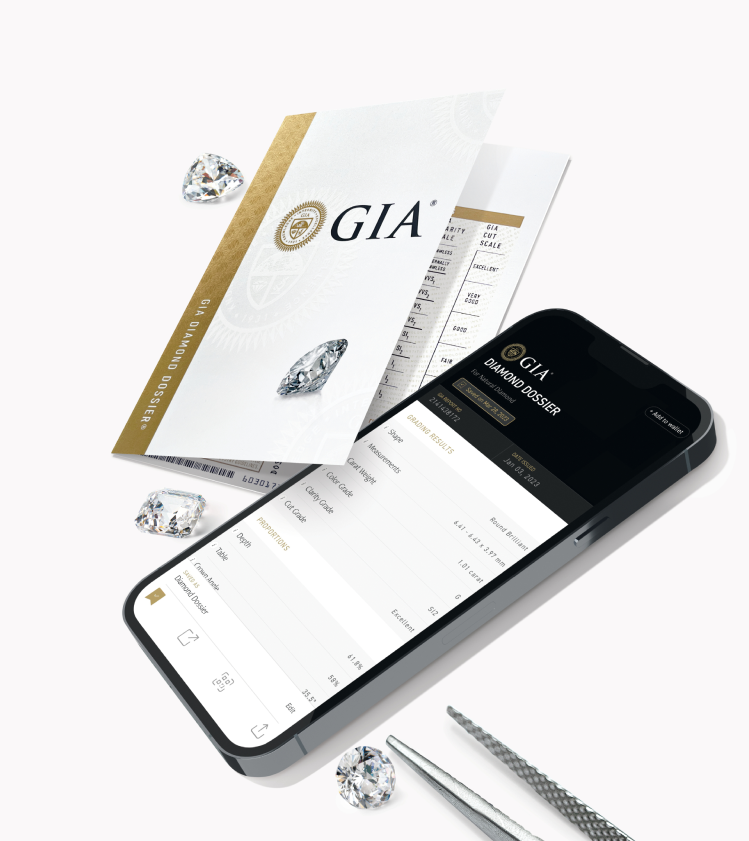
Expertise at your fingertips.
You don’t need to be a gemologist to purchase a diamond with confidence. You just need to know where to find one.
GIA is the trusted benchmark for diamond grading. Download the GIA App now to learn more about the 4Cs and look up GIA reports.
Expertise at your
fingertips.
You don’t need to be a gemologist to purchase a diamond with confidence. You just need to know where to find one.
GIA is the trusted benchmark for diamond grading. Download the GIA App now to learn more about the 4Cs and look up GIA reports.
GIA Report Check
Access your GIA Grading Report results using your GIA report number.